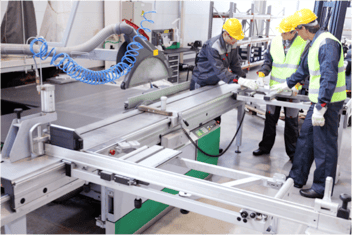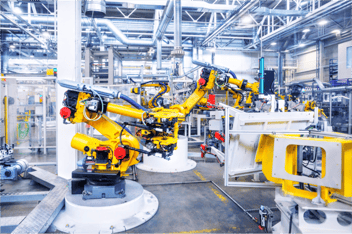4 Common Manufacturing Processes that Could Benefit From An Operational Excellence Program
 Today, small- to medium-sized manufacturers feel the pressure to produce more at a lower cost. While this competitive nature leads to innovative products and services, it also weeds out the manufacturers that lack cost-effective processes as margins tighten.
Today, small- to medium-sized manufacturers feel the pressure to produce more at a lower cost. While this competitive nature leads to innovative products and services, it also weeds out the manufacturers that lack cost-effective processes as margins tighten.
Through operational excellence, manufacturing plants can improve processes and procedures to achieve long-term, sustainable growth. But, operational excellence is not always easily achieved.
Below, explore the 4 most common areas across the plant manufacturers must take into consideration in order to adopt a successful operational excellence strategy.
1. Quality Improvement
How many products do you produce in an hour? A day? If a product was produced with a defective part, it may require substantial rework, which inevitably affects total cycle times within production.
To achieve operational excellence, manufacturing teams must continually and quickly pinpoint quality issues to identify where the defect occurred in the production schedule.
One way to do that is through continuous flow, a lean manufacturing method that promotes the production of smaller batches to reduce defects. This allows manufacturers to examine output to make any necessary improvements in production, thereby eliminating waste and quality issues in the process.
2. Plant Layout and Travel Times
Do your employees have to travel long distances between production lines? Are they constantly searching for the right tools at their workstations? These scenarios are signs of poor plant organization and signify the need to reorganize workplace layout.
One way to do that is through 5S, a lean manufacturing concept that prioritizes efficiency and effectiveness within the workplace. The five steps include:
- Sort: Organize materials to optimize flow
- Set in Order: Arrange materials in order of use so they’re easily accessible
- Shine: Clean and maintain the workspace
- Standardize: Implement charts, labels, and schedules for consistency
- Sustain: Conduct audits to keep the workplace organized over the long-term
When there’s a plan in place for making 5S an ongoing effort, it can be sustained over time.
3. Machine Maintenance
How reliable is your manufacturing machinery? Does it perform its fully intended purpose on demand with minimal downtime? In the answer is no, operational efficiency will drop.
One way to solve for this is preventive and predictive maintenance. By proactively monitoring equipment during regular operations, manufacturers can reduce the risk of unexpected downtime—but that’s not all. The direct benefits of routine maintenance include:
- Improved safety
- Prolonged asset life
- Streamlined production
All of these components influence operational excellence in a manufacturing setting.
4. Changeover Times
How quickly does your plant convert a production line from running one product to another? While changeover times vary between lines, they can be seen as a roadblock in the flow of production.
One way to improve changeover times is through a kaizen event, which is a lean tool that allows for teams to collaborate and systematically find solutions to a desired goal. Kaizen events are proven to decrease changeover times and increase output and responsiveness to customer demand. In fact, one manufacturer reduced changeover times by 50% and increased productivity by 27% using the kaizen methodology.
Make Operational Excellence Actionable
A focus on continuous improvement is usually what separates the manufacturing companies that achieve operational excellence from those that fall by the wayside. For more information on operational excellence, register for our 8th annual Northeast Ohio manufacturing symposium, Future Factories: A Symposium on Manufacturing Talent, Tech, and Tactics, on September 26.
The Symposium features breakout sessions led by experts who make operational excellence actionable for manufacturing companies like yours.





